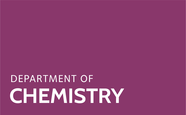We have prepared neodymium(III) and ytterbium(III) complexes from a range of poly(pyrazolyl)borate ligands and studied their near-IR luminescence properties, in particular using solution lifetimes obtained in protonated and deuterated methanol to determine the extent of solvation of the complexes. For the neodymium complexes, the luminescence lifetime in methanolic solutions increases as solvent is excluded from the inner coordination sphere. However, for a given inner sphere coordination number, these complexes have longer luminescence lifetimes than complexes with aminocarboxylate ligands: there are fewer proximate C-H oscillators in the pyrazolylborate complexes compared to the aminocarboxylate complexes, and non-radiative quenching is therefore reduced. This bears out earlier suggestions that long luminescence lifetimes can be obtained by minimising the number of close diffusing X-H oscillators.




